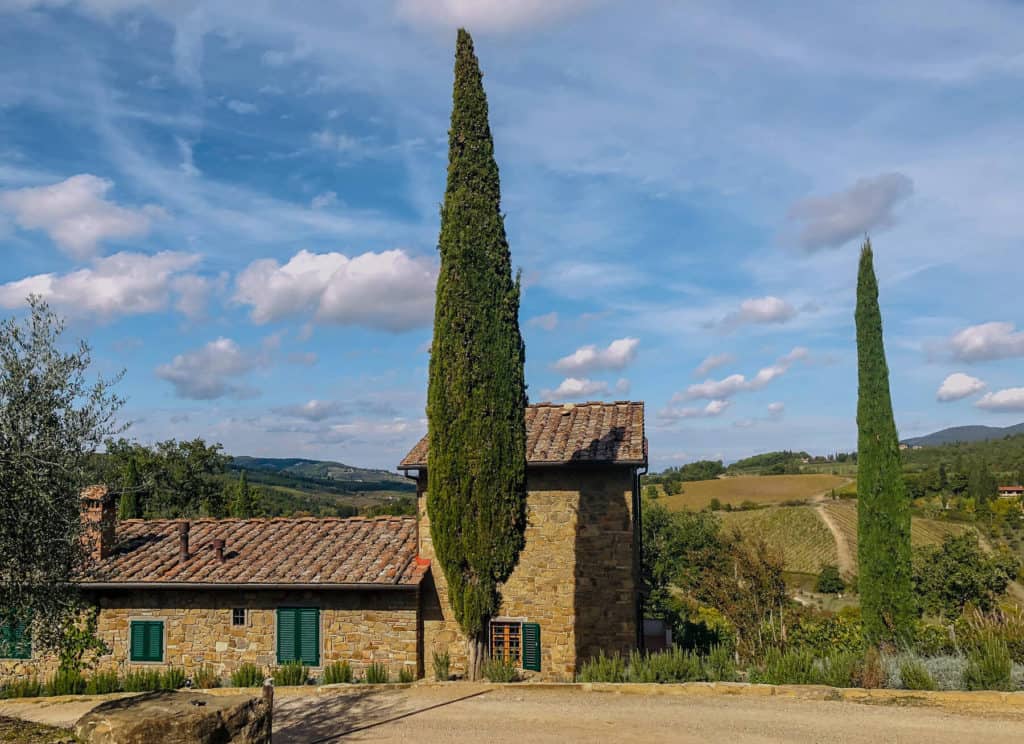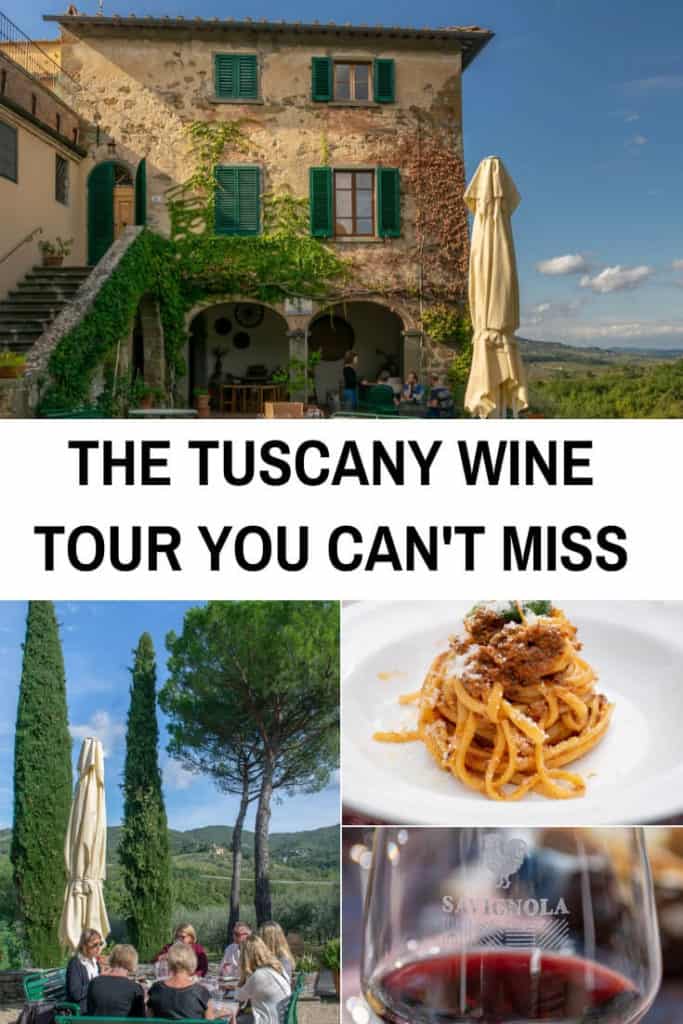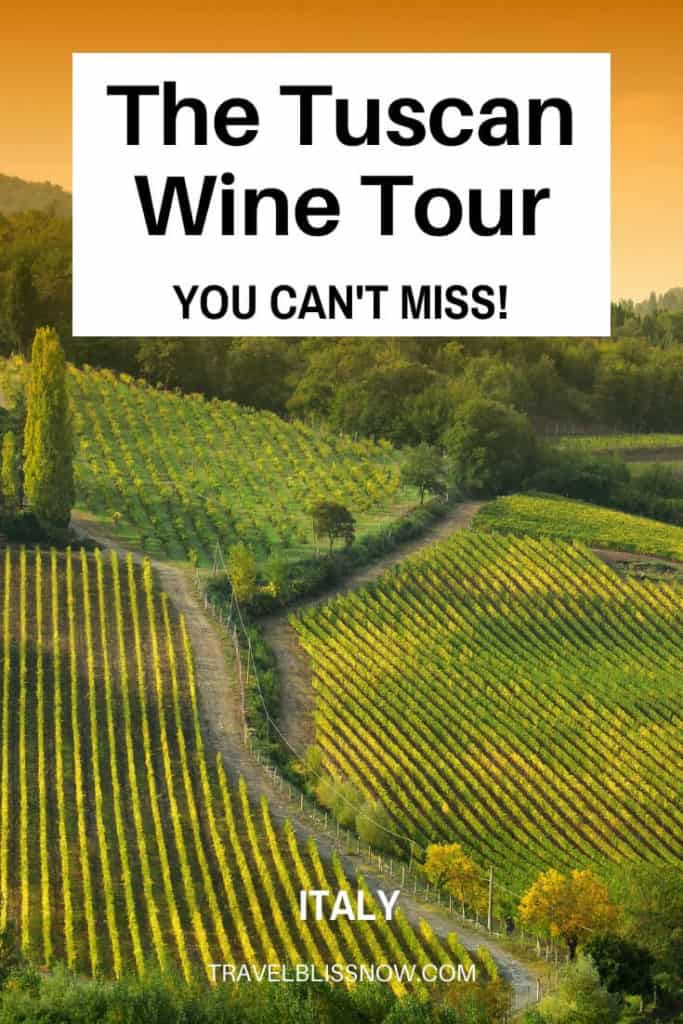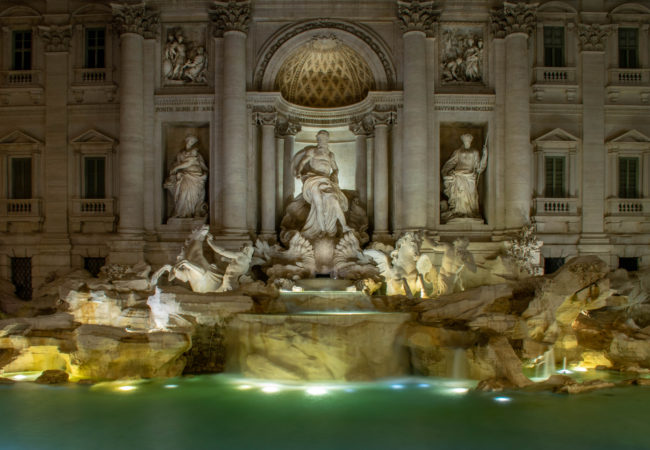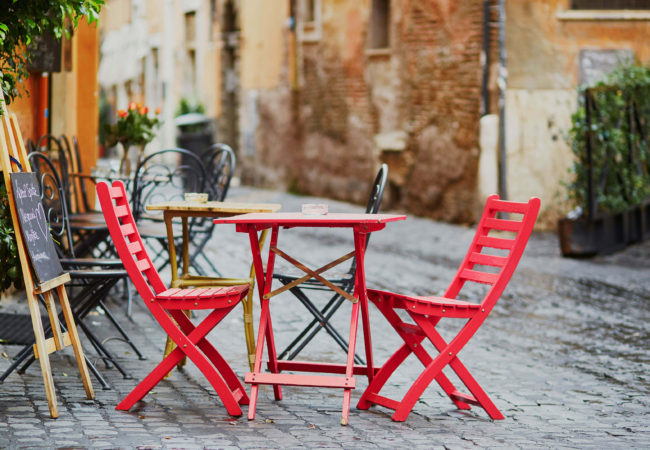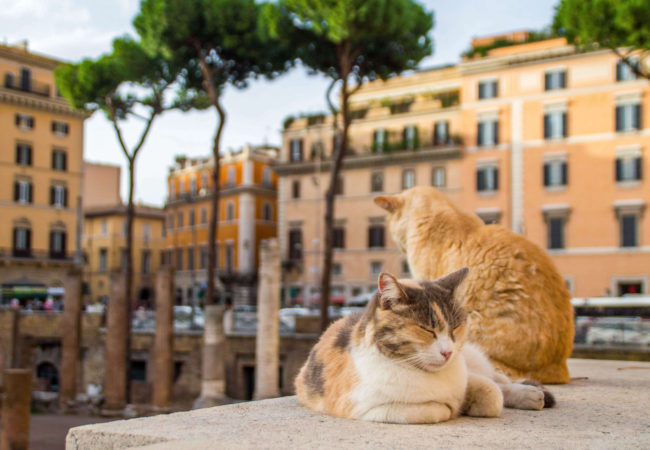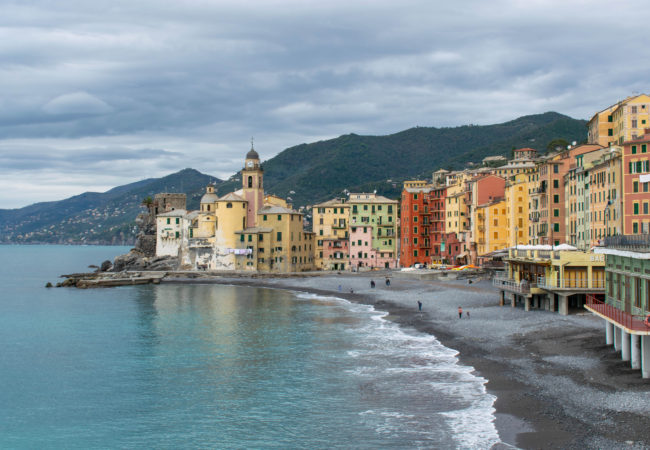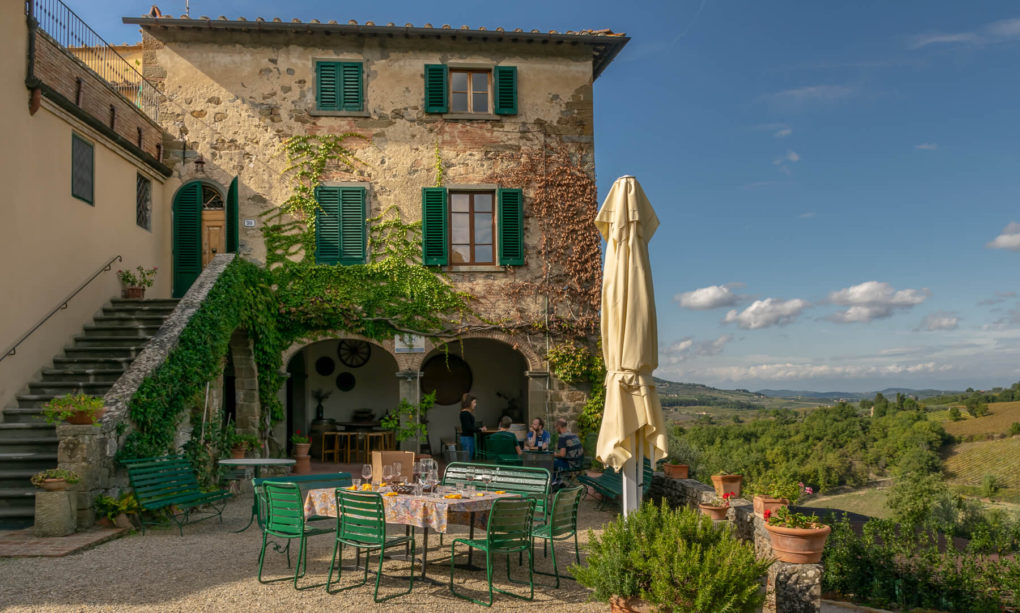
The Chianti Wine Tour in Tuscany You Can’t Miss
Here’s the thing about planning a Chianti wine tour in Tuscany, Italy.
You can do it yourself, but, in most cases, you have to book wine-tasting appointments in advance. Plus, drinking and driving on the winding roads of Tuscany is not a good pairing.
You can take one of those big bus Tuscany wine tours that zoom through a few of the larger operations.
Or you can take a small group tour guided by a professional sommelier where you’ll meet the wine makers and feel their passion for their craft, all the while tasting fabulous wines and home made food.
It’s not hard to tell which one I chose. That’s why I was glad to find the “Chianti and Super Tuscan wine tour” from Florence with Tuscany Tour Time.
On this day tour from Florence, I joined six others to visit three family-run organic wineries in the Chianti region.
Here are the highlights of the tour, including a “how-to” on wine tasting and buying tips (and why you should never drink wine that smells like bandaids).
The Chianti wine tour – Getting the goods on the grape

View from Fattoria di Bagnolo winery
One of the advantages of having a sommelier as your Chianti wine tour guide is that you can learn everything you want to know about Chianti and Super Tuscan wines during the drive. After the tour, guests will get more information in a brochure from Tuscany Tour Time.
Here’s a very brief primer from the conversation with our guide, Claudia.
What is Chianti wine?
Chianti is a dry, red wine produced in the Chianti region between Florence and Siena. It’s made from at least 75% Sangiovese grapes along with other approved grape varieties. It’s an easy drinking wine with cherry and violet notes.
What is Chianti Classico?
Chianti Classico is a smaller and historic zone in Chianti where full-bodied wines are traditionally made. It’s made with 80% Sangiovese grapes and is more suited to aging. It’s the kind of wine that goes well with a steak.
What are Super Tuscan wines?
Super Tuscans are the rebels of Tuscan wine. These wines were created in the 1970s by winemakers who were frustrated with the strict rules in Italy. They wanted to be more creative and mix in grapes that were not on the “approved list”. This creativity has led to a lot of variety to the Super Tuscans, although they tend to be big wines.
A visit to a wine estate once owned by Machiavelli

Wine Cellar at Fattoria di Bagnolo winery
The Fattoria di Bagnolo wine estate, not far from Florence, dates back to 1419 and once belonged to Florentine philosopher Machiavelli.
Today, it’s run by the Bartolini Baldelli family which produces 25,000 bottles of artisanal wine per year. Its manager, Giovanna Bartolini Baldelli, told us that the family puts “all of our passion, tradition and history into the wine”.
And what a history. Aside from having Machiavelli in the mix, Giovanna told us the story of how local men hid inside the cement vats in the wine cellar in World War II. The German soldiers were young and exhausted when they arrived, she said. Italians gave them food and wine and they didn’t check the vats. The people were saved “thanks to prosciutto and wine.”
Wine tasting tips on the tour

Fattoria di Bagnolo wine estate
Giovanna, a sommelier herself, shared her best wine tasting tips with us.
First you have to sniff the wine by swirling it in the glass and putting your nose all the way in, she said. An expert sommelier can recognize as many as 350 different smells in a wine.
For the rest of us, Giovanna said it’s easier to remember the four smells you don’t want to find in a wine. They are:
- Vinegar – This happens when wine has been overly exposed to oxygen.
- Cork – This is caused by a fungus in the cork. It’s why the sommelier smells the cork before serving the wine.
- Wet dog – This smell occurs when the wine has been contaminated by a chemical in the cork.
- Plastic bandaids – This is a bacteria related to spoiled yeast in the barrel.
If you notice any of these smells in your wine, send it back.
How to taste wine
To taste the wine, you need to make sure it touches all of your taste buds. After you swallow, see how long the taste stays on your palate, while you judge its flavour (about 6 or 7 seconds means it’s good). Giovanna’s demonstration of the “procedure” is priceless!
Tasting Tuscan olive oil on the tour

During our visit with Giovanna, we tasted three luscious wines and extra virgin olive oil produced on the estate.
To make the olive oil, the olives are picked by hand at the moment they mature and then pressed within 12 hours. This doesn’t taste anything like the olive oil in an average North American grocery store. It’s more fruity with hints of artichoke, fresh grass and thyme. And, it’s chock full of anti-oxidants, Giovanna told us.
Idyllic Tuscan wine tasting and home made lunch

Vineyards at Savignola Paolina. The patterns are reflected in their logo on their wine glasses and bottles.
Next, we headed into the heart of Chianti Classico country, near Greve, to visit Savignola Paolina. This agriturismo (farm stay) winery was founded by Paolina Fabbri Curcio, a pioneer in the wine business. In the early 1900s, she was the first woman to join the Chianti Classico Consortium to set standards for the wine.
Now, it’s owned by a Swiss couple, Manuela and Luzius who clearly share her passion for wine.

Our stunning lunch setting at Savignola Paolina
I can’t imagine a more quintessential Tuscan experience than dining on the patio with a bucolic view of the vineyards.
For lunch, we feasted on cheeses, prosciutto, salami, olives, fresh bread, vegetable gratin and a delicious pasta with deer ragu. We tasted three lovely wines, a Chianti Classico, a Chianti Classico Reserva (aged longer) and a Super Tuscan. Savignola’s Super Tuscan wine is actually made entirely from Sangiovese grapes, but Luzius said he wants to stay flexible to potentially add other grapes in future. Creativity is the new thing!
The grapes are selected by hand
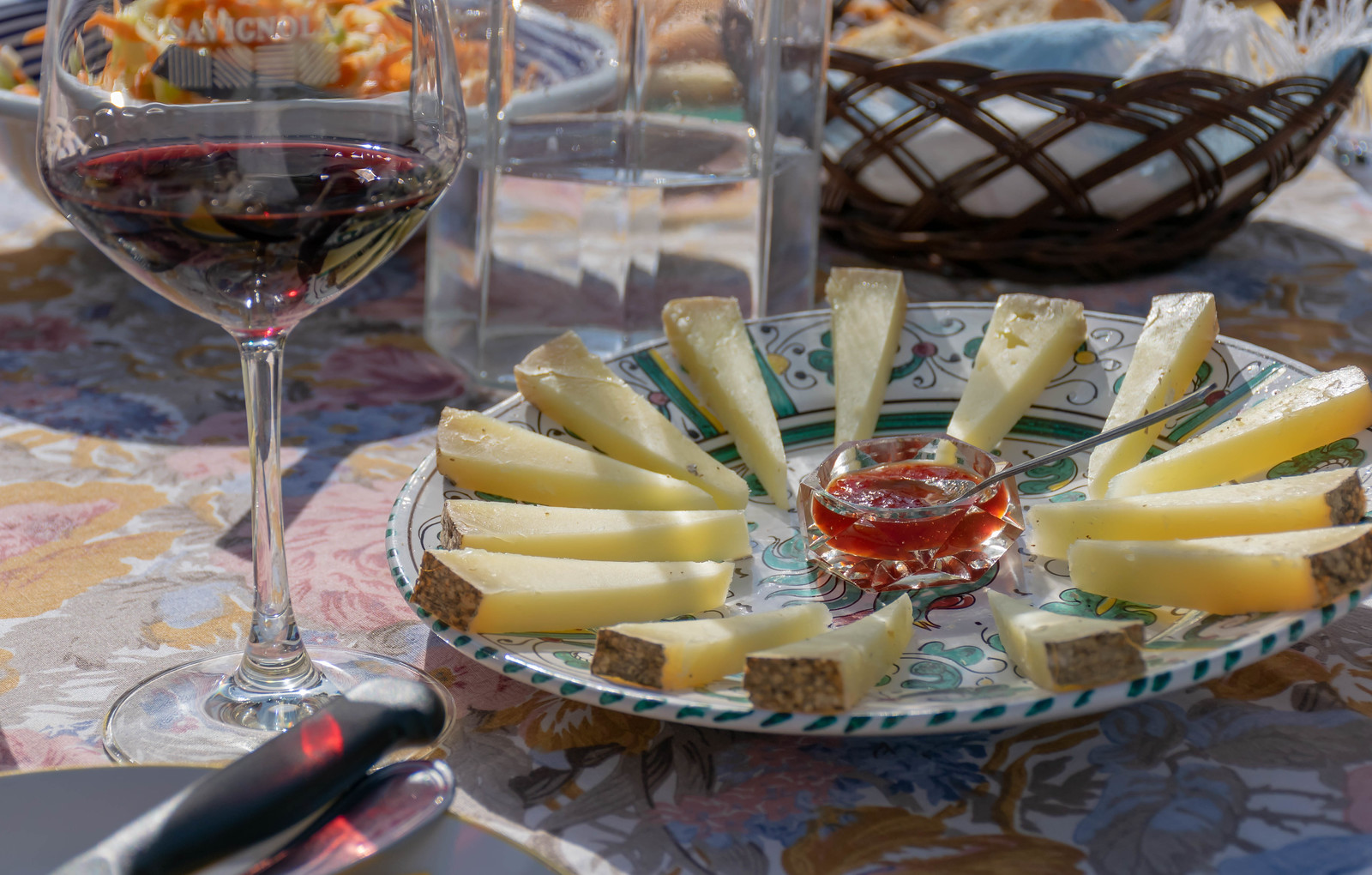
Savignola produces 22,000 bottles of wine a year, all made with loving care. The grapes are selected by hand to make sure there aren’t any unripe berries in it. It makes a difference if you want a top quality wine., Luzius told us.
It gives new meaning to the term, “hand-made”.
Best & Worst Vintages of Chianti Wine
If you’re in the market for some Chianti, Claudia advised that the best vintage in the last 50 years was 2015 due to great weather that season.
The worst vintage was 2014. Continuous rain and cold weather caused a lot of the grapes to go mouldy.
Montefioralle, an ancient village in Chianti

If you follow my blog, you’ll know that I love a stroll through the cobblestone streets of any charming village. We stopped in Montefioralle to do just that. This is one of the most ancient villages in the Chianti area, dating back to 1085.
The village is still surrounded by its original defensive walls, and the houses are all made of stone. Best of all, there are no cars inside the walls.
If you’re in the area, don’t miss it. It’s just a 20-minute walk from Greve.

A winery under the Tuscan sun

Solatione Winery. The black rooster, a symbol of Chianti, is also the winery’s logo.
Our third and final stop on the Chianti wine tour was at Solatione Winery, which means “rays of the sun”. The winery is on a hilltop 450 metres above sea level with great sun exposure all day.
This family winery produces 15,000 bottles of wine per day. One of the family members, Francesca, told us that the estate grows Sangiovese grapes, but also Merlot, which are unlike any other owing to the location. Made of 100% Merlot grapes, Solatione’s Super Tuscan wine is complex and spicy, yet soft. It goes really well with dark chocolate, a combination I was more than happy to try!
It was a fantastic day. I wouldn’t actually describe it as a tour or not a typical one anyway. It was an experience – tasting the wines while talking with the people that made them – – in the most beautiful setting imaginable. It was a true taste of Tuscany.
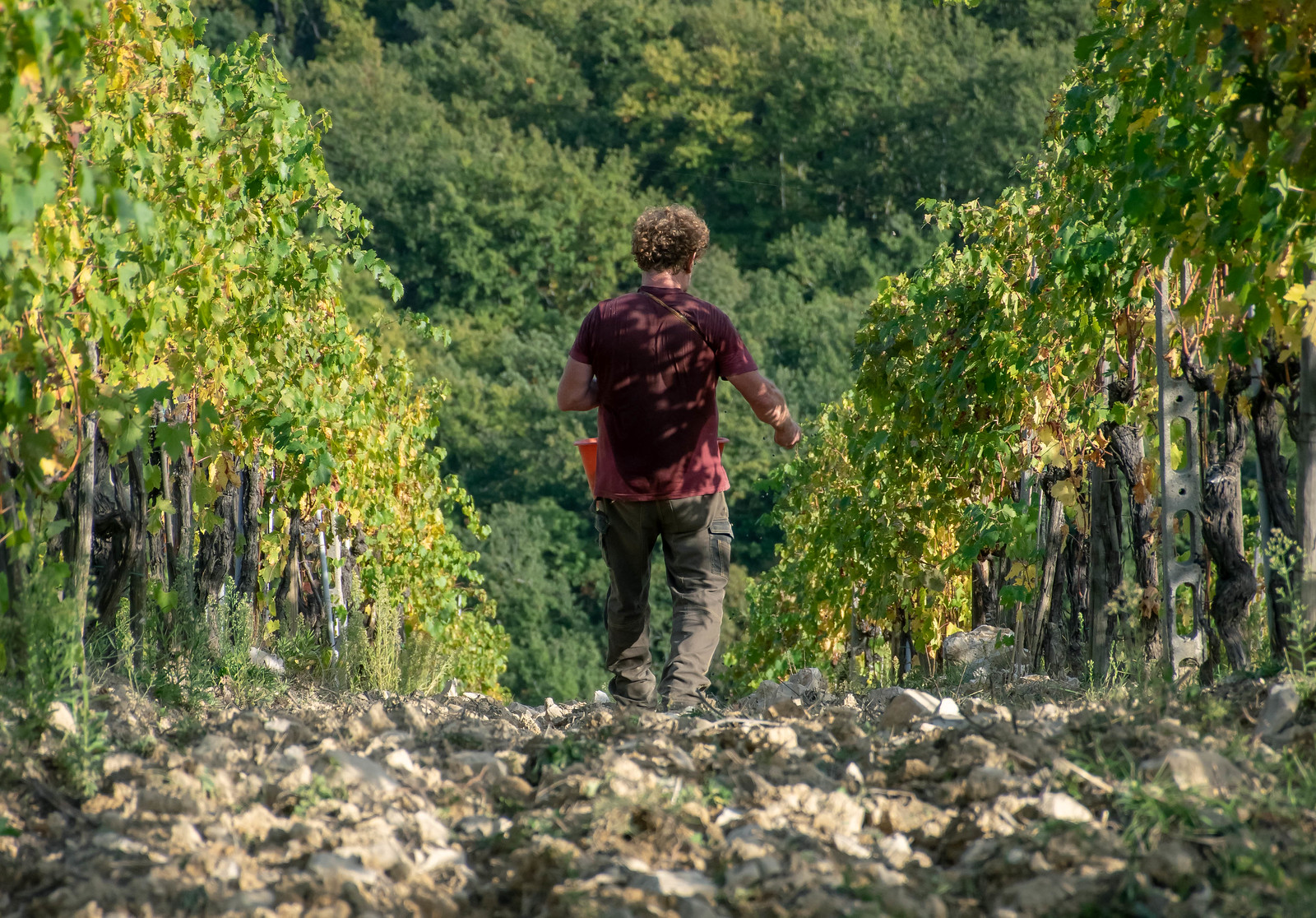
“I believe great happiness belongs to all those who
are born where good wines are made. “
-Leonardo da Vinci
More Information:
Book the tour with Tuscany Tour Time here. Note that the tour may visit different family wineries on any given day. Tuscany Tour Time offers other tours in the region (there’s one with chocolate!), and you can also take classes at its Wine School in Florence.
Where to stay in Florence: Check deals on Florence hotels here.
Tourism Information: Visit Tuscany, Discover Italy
Suggested Reading: Rick Steves Florence & Tuscany, Lonely Planet Florence & Tuscany (Travel Guide)
, Wines of Tuscany: Chianti, Montalciono and Bolgheri
Thinking of buying some wine? Get these reusable, cushioned wine bottle protector bags or this TSA-Approved travel corkscrew.
Avoid data roaming fees: I use an aloSIM eSIM (a digital SIM card) to stay connected when I travel. Get 5% off your first order with the promo code: TRAVELBLISSNOW.
Travel Bliss Now was a guest of Tuscany Tour Time, but my opinions are entirely my own.
Pin it:
How to Eat Like a Local in Florence
This Dreamy Tuscany Spa Resort is the Ultimate Place to Relax
How to Eat Like a Local in Rome

